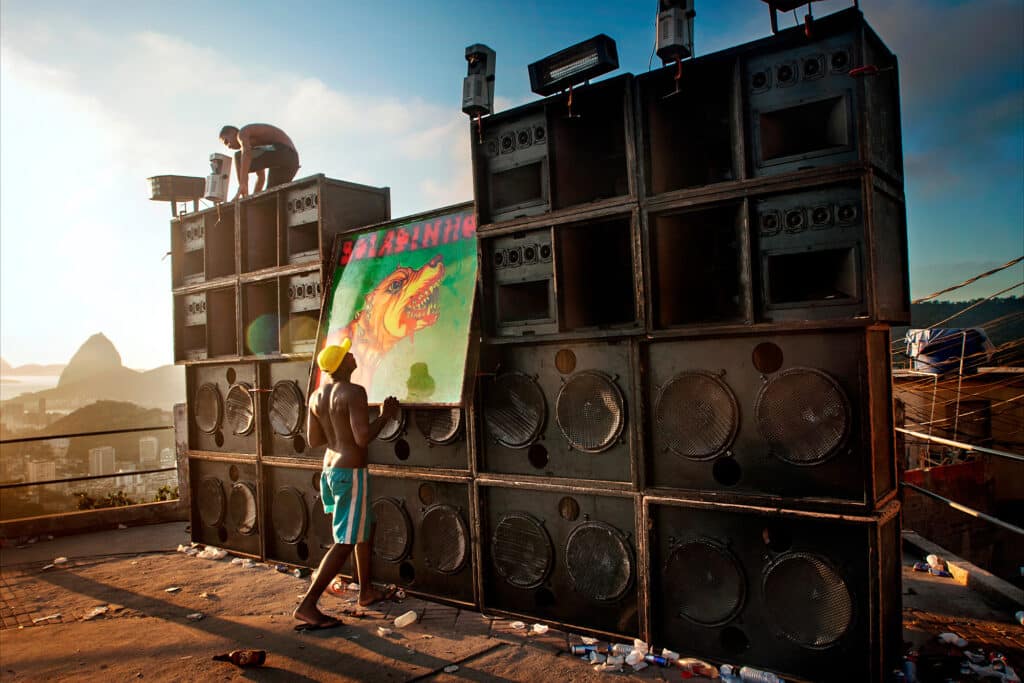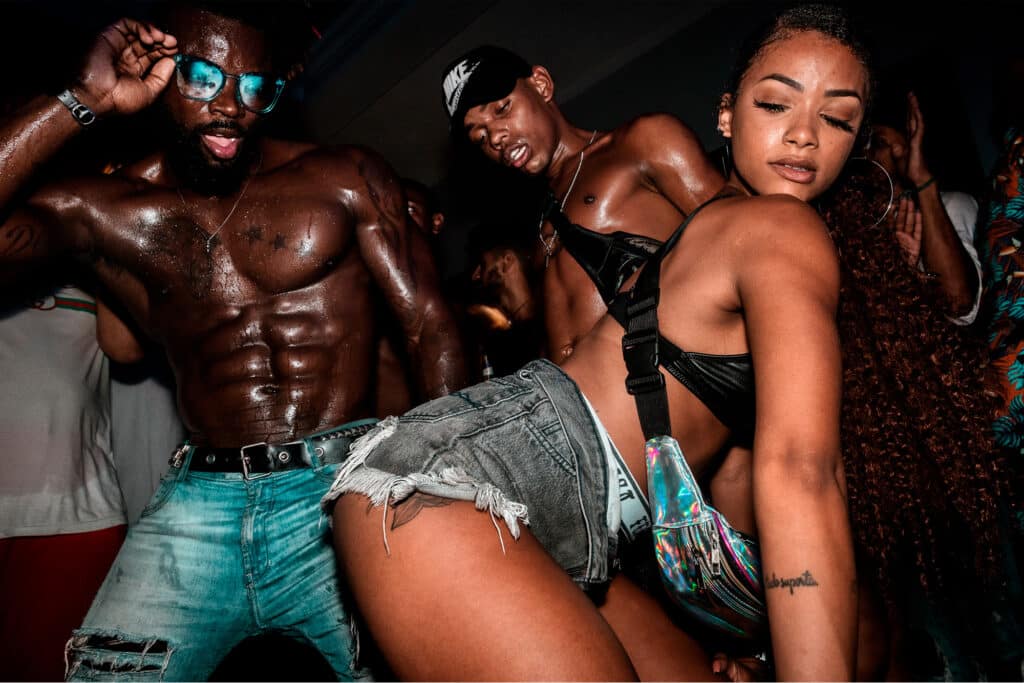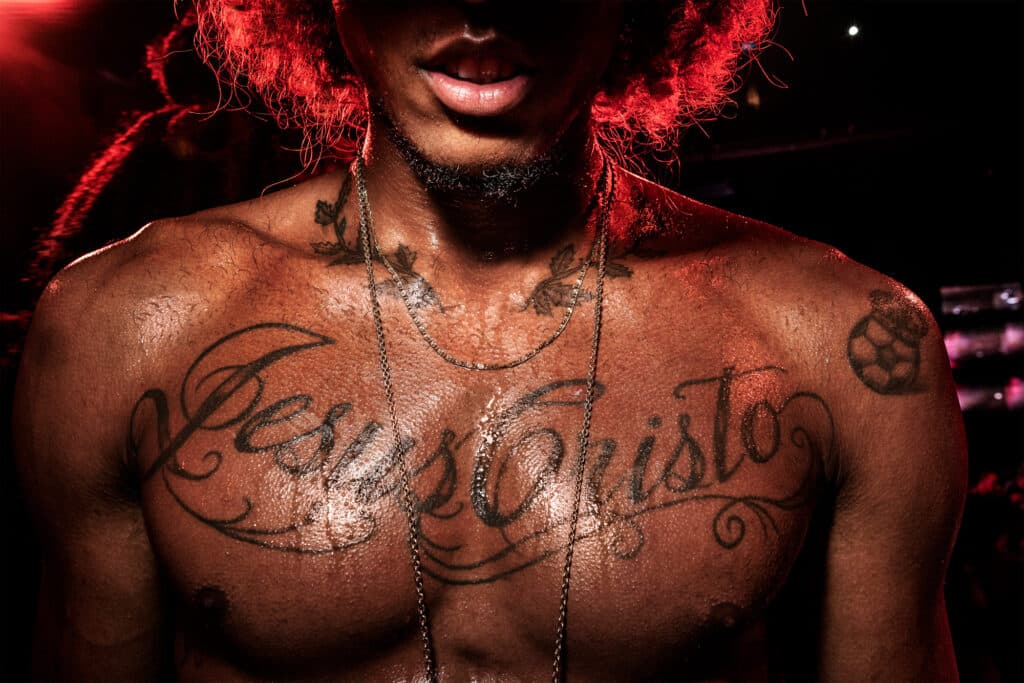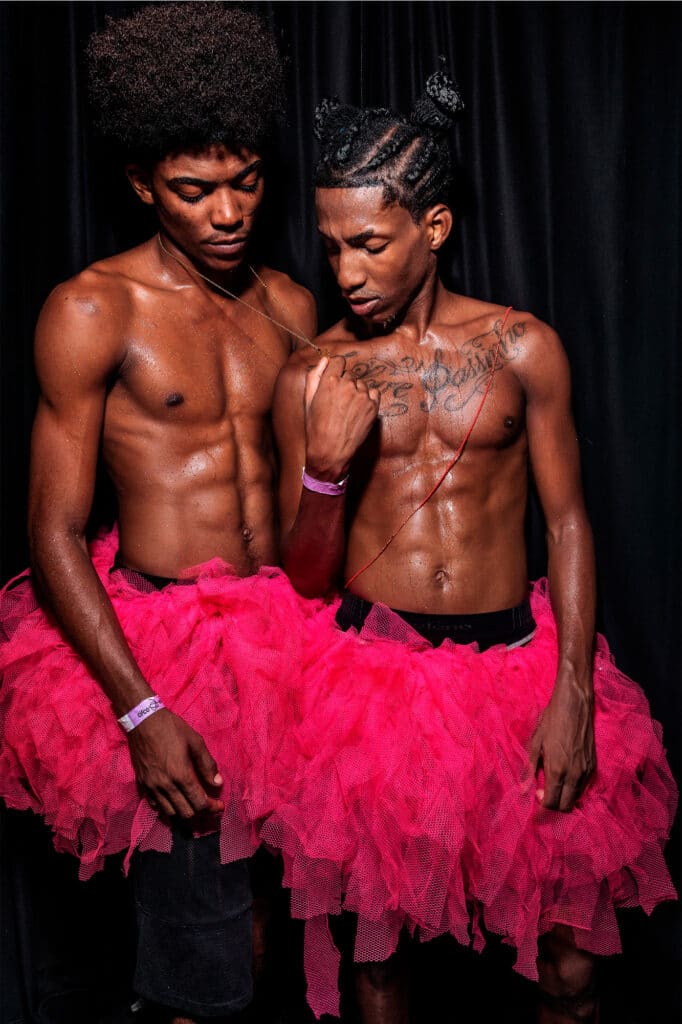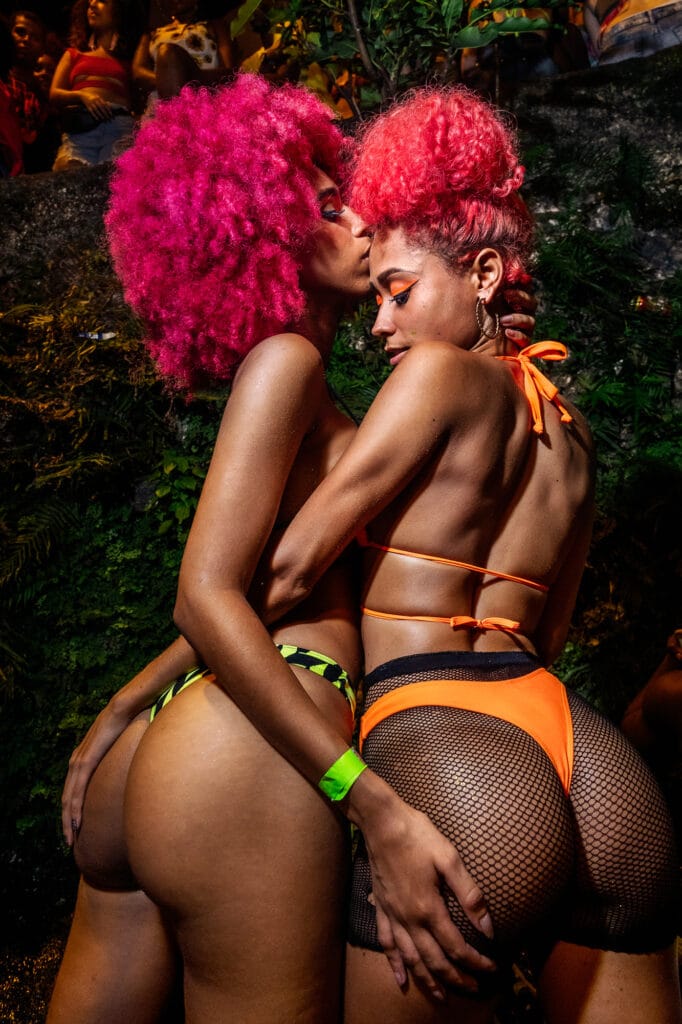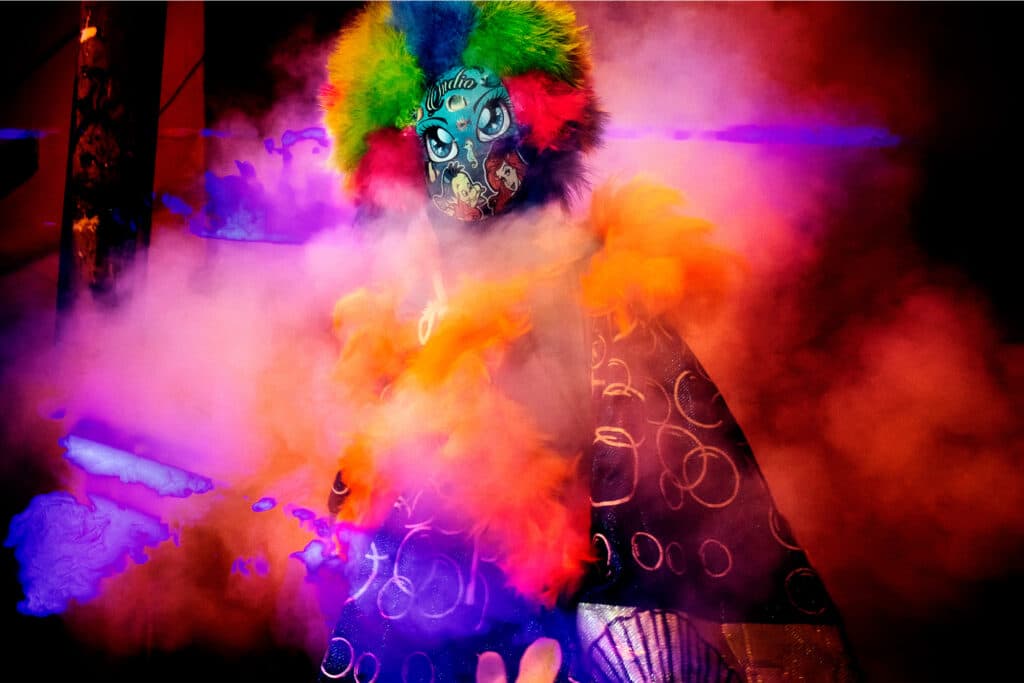
One of the most elegant covered passages in the center of Paris has made room for two Brazilian megacities, Rio de Janeiro and Belém, as they plunge into the splendor and fury of carnivalesque rites and festivities. Entitled “Fever”, Vincent Rosenblatt’s exhibition is on view at the Pierre Passebon Gallery. It offers an eye-popping parade of colors, sequins, feathers, and rhinestones, beautiful bodies swept by the wave of booming rhythms in a celebration that both inherits and subverts the conventional image of the carnival.
Rosenblatt’s images unfold the famed Rio de Janeiro carnival in three frescoes of vibrant chiaroscuro, no less sumptuous than the floats of the Samba schools descended from the favelas to parade in the Sambadrome Marquês de Sapucaí. Rosenblatt went looking for the fever in the crucible of the Carnival’s three, more or less tolerated offshoots, as sassy, as violent, and as liberating as the first medieval Mardi Gras, which defied Lent restrictions and profaned cathedrals. In a travesty of dance-macabre, in Rio de Janeiro’s Northern Zone, Bate-Bola brings to life terrifying images of murderous masked clowns circulating among mortals as verbal insults are being hurled by one band against another. Throughout the year, Rio Baile Funk flaunts before Rosenblatt’s lens its festive eroticism, while, half a continent away, in Belém, Tecnobrega sound-systems loom large, monsters straight from science-fiction or Japanese manga, bursting the eardrums of a whole neighborhood with their two-beat rhythm.
We talk to Vincent Rosenblatt about this carnival of carnivals.
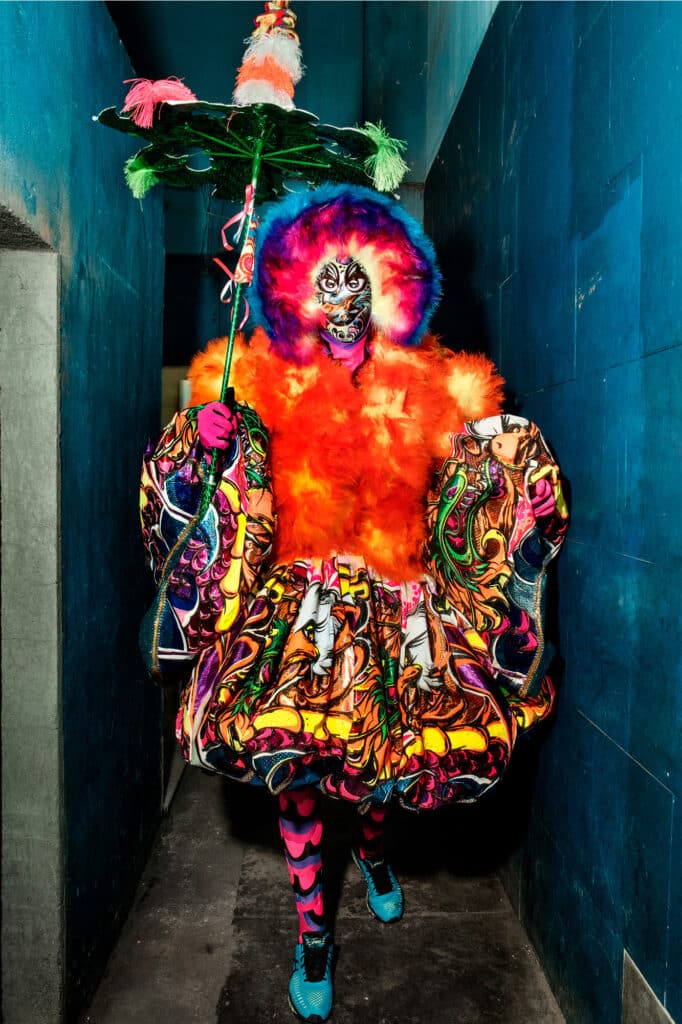
Could you give us an idea of the proportion of your photo library dedicated to the Carnival in Brazil?
The “Secret Carnival” of Bate-Bola takes place only four days a year. I have been working on it since 2007, and I’ve kept about two hundred images. The Bailes Funk scene, with its Festas Pretas, or “Black Parties,” is on all year round in Rio, and makes for the bulk my work. The Tecnobrega scene, around Belém do Pará, showcases a contemporary, technological side of the Amazon that I have been documenting since 2008, but not as often as I would like. I plan to spend more time there.
Were the specificities of Bate Bola, Rio Baile Funk, or Tecnobrega decisive in your way of showing them?
I feel that the subjects chose me, not the other way around. Very few things really interest me, but when they do, I feel a kind of epiphany, and I get attached to a photographic project for many years. I started Bailes Funk in 2005, the Bate-Bola Carnival in 2007, and Tecnobrega “Aparelhagens” of Belém in 2008. Their specificity is that each contemporary scene started out in the outskirts and the favelas. Hated by the elites, they are sometimes violently repressed by the state, especially in Rio de Janeiro, although they give Brazil its most original manifestations. Whether it is the work of the body, the costumes, or the machines, the marginalized youth of Brazil’s megacities create meaning, forms, and music: they are the ones in the vanguard, they invent new worlds.
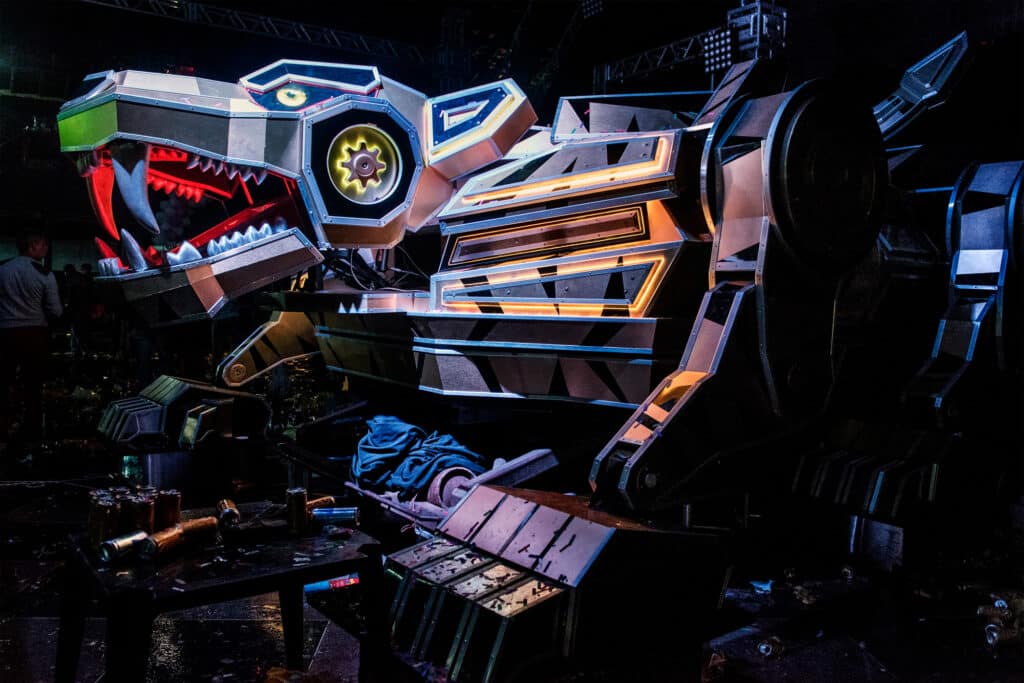
How do you manage, in the thick of your report and most likely with a flash, to turn parade participants into models for beautiful images? Does the ambiance lend itself to intuitive casting?
Whether it is year-round in Rio’s bailes or for the duration of the Carnival, the partygoers work on their bodies and costumes as works of art in perpetual evolution: tattoos, bodybuilding, braids, accessories, tanning marks…. This goes far beyond a simple “hobby.” It is their means of expression, of desire for art, and self-affirmation in a racist society that targets them with deadly force. So, the party is not just a party: for these artists it is a constructive time and a collective cure, a way to think about going forward and, be it for a single night, shining like a star.
What resonance can social networks give to Carnival? Do you sometimes find your images there?
I have always shared my images with the people I photograph. Bailes Funk of the 2000s transformed working-class clubs and favelas into intense but underrepresented cultural hubs. The clubs lived in fear of being shut down, and the favelas still fear violent irruptions by the military police. Photography continues to be perceived as dangerous or siding with the oppressors. All my work has been to put myself at service of these people, to provide an iconography that tries to show the beauty and vital force of this culture. Some DJs and producers from the carioca scene immediately felt the need to preserve a trace of these parties always threatened by repression. DJs created communities and pages for every Baile Funk, from each favela on Orkut, the first social network, long before Facebook and Instagram. My photos were published there, and other DJs from distant favelas would call on me to do the same thing in their neighborhoods. Then I started to screen my images in the favelas, in the middle of bailes, so that everyone could see one another and validate their work. This alliance has continued over the years, as it did in my work on the Bate-Bola carnival. I owe it to the funk carioca DJs for leading me to discover this other scene. There too, it is the artists from the peripheral neighborhoods who ask me to photograph their nights out in the streets of the city’s northern and western districts, far from the beaches of the South Zone. In SESC, Rio’s northern neighborhoods’ only cultural center, I set up an exhibition of their costumes alongside my photographs, inviting people to discuss and present their work to the public. My first exhibition in Rio, in 2006, in the middle of a period of repression, brought together the main actors of the funk scene around a debate on “Funk & Freedom of Expression.”
Do you intend to publish two more books, on Bate Bola and TecnoBrega?
The Bate-Bola book is already in the works and I hope to have it in print within the next two months. For Tecnobrega, I hope to find the means to go back for one or two longer stays in Bélem do Pará before making a book of it.
What remains of the great traditional Carnival, such as portrayed in Marcel Camus’s 1959 half-documentary, half-scripted film Orfeu Negro?
Today, Orfeu would circulate between Bailes Funk, Black Parties, and would dress up as Bate-Bola during the Carnival. This is where the revolutionary essence of the original, unbridled Carnival lives on, revealing the richness of the city outskirts and eluding the market, in total opposition to the official Carnival parades of the Samba schools, cloistered in a concrete avenue and lit by a cold light, calibrated for TV cameras.
Vincent Rosenblatt, “Fever”. Galerie du Passage—Pierre Passebon, 20/26 Galerie Véro-Dodat, 75001 Paris. 10:30 am to 6:30 pm, Tuesday–Saturday, until July 29, 2022.
Vincent Rosenblatt, Rio Baile Funk, {lp} Press, 200 pp, €45.
You can find his work on Instagram & Twitter.
